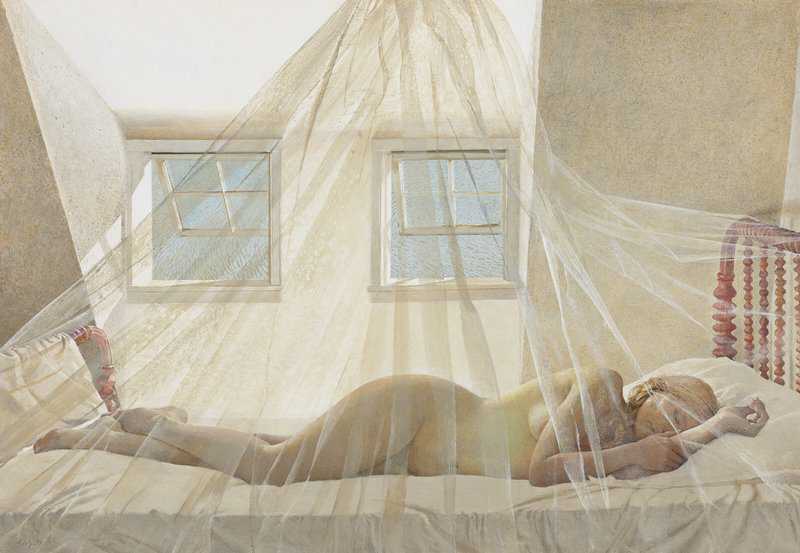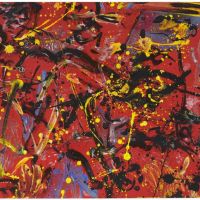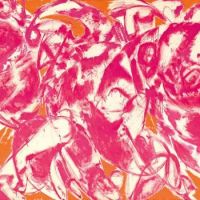Safe Shipping Worldwide
| Size | Regular Quality | Museum Quality |
|---|---|---|
| 23.6 x 16 in 60x41 cm |
$ 149.00 Add to Cart
|
X |
| 32 x 21 in 80x55 cm |
$ 176.00 Add to Cart
|
$ 616.00 Add to Cart
|
| 40 x 27 in 100cm x 69 cm |
$ 248.00 Add to Cart
|
$ 868.00 Add to Cart |
| 48 x 32 in 120cm x 83 cm |
$ 319.00 Add to Cart
|
$ 1117.00 Add to Cart |
| 60 x 40 in 150cm x 104 cm |
X | $ 1530.00 Add to Cart |
| 79 x 54 in 200cm x 138 cm |
X | $ 2317.00 Add to Cart |
Regular or museum-quality hand-painted?
- Museum-quality replicas by Paolo: Exceptional product, accurate to the tiniest details, textures and values. Requires more time to process, hence the higher price. A true work of art for connoisseurs who have the means.
- Regular Hand-Painted Quality: Oil painting of very satisfying quality, a good value for your money.
Other paintings that might interest you as well
Buy Andrew Wyeth, Day Dream hand painted reproduction museum quality
Our high-quality oil painting reproductions are hand-painted on the finest canvas using only the finest pigments. What makes our high-quality paintings better?
- Level of details: we are doing a replica that is close to a forgery, reproducing everything in the small details.
- The paint is added thickly: Our brushstrokes are thicker, using more paint, unlike cheap copies you can buy on the internet, that are merely prints on canvas with hints of acrylic paint.
- Complexity of the artworks: Complexity of the artwork is not a problem. If some paintings are more of a challenge than others, we thrive in excellence realizing them.
With an original blend of simplicity and intricate detail, Andrew Wyeth is best known for elevating the everyday into timeless visions of poignant beauty.
In his masterful Day Dream, Wyeth updates the archetypal female nude into both an artistic study of light and atmosphere, as well as a psychologically engaging analysis of secret intimacy. Depicting the artist’s most notorious model Helga Testorf, Day Dream balances a crisp, monochromatic palette with detailed tempera brushwork to eternalize one of the most fruitful relationships of his career as a lasting image of ethereal beauty.
In the 1970s, Wyeth was at a crossroads. After completing almost four hundred works over thirty years, mostly inspired by the Kuerner family, his neighbors in Chadds Ford, Pennsylvania, he faced an inspirational crisis when the patriarch of the family, Karl, became ill.
A new muse entered in the form of Helga Testorf, a 38-year-old German woman helping around the Kuerner home as a nurse. For the following fifteen years, from 1971 to 1985, Wyeth created 240 works featuring Helga. He later confessed, “I was entranced the instant I saw her… Amazingly blond, fit, compassionate. I was totally fascinated by her” (quoted in Andrew Wyeth: Helga on Paper, New York, 2006, p. 12).
While the majority of the series was kept secret, a select few paintings of Helga, including Day Dream, were shown and sold during these years of creation. The extent of the series was only later revealed in August 1986, appearing as headline news on the covers of Time and Newsweek. From contemplative to titillating, the Helga works have captivated audiences ever since with their intense intimacy.
Wyeth completed over 35 drawings and watercolors of Helga in various poses of sleep, including three drawings and two watercolors directly related to the present work. Helga’s openness is readily seen in how comfortable her body appears in such a vulnerable position in front of the artist. As Richard Meryman explains, “sleep suffuses the Helga series. For Wyeth it is the ultimate, ideal pose, subtracting the model’s personality from the equation, allowing the remote fascination of the voyeur. He is alone with his thoughts, his imagination” (Andrew Wyeth: A Secret Life, New York, 1996, p. 354).
Indeed, while Wyeth’s Day Dream follows in a long tradition of odalisques, his sleeping subject stands as a counterpoint to art history’s provocative figures openly challenging the male gaze, such as Edouard Manet’s famous Olympia (1863, Musée d’Orsay, Paris). Comparing the Manet with Wyeth’s Helga series work Black Velvet (1972, Private collection), Patricia Junker astutely notes, “The unsettling audacity of this nude resides not in a confrontational gaze at the viewer and the artist… It is, rather, Wyeth’s own audacity, his insistence upon a meticulous, painstaking dry brush technique, his virtuosity ensuring that this glowing, naked body, displayed isolated, this woman who does not see us, holds our gaze longer and longer. His obsessive, possessive technique underscores, too, the intimacy between the artist and the model” (“Couples, 1968-1988,” in Andrew Wyeth: In Retrospect, Chadds Ford, 2017, p. 151).
Andrew Wyeth's Day dream description
In Day Dream he immerses Helga’s form within the bright west-facing upstairs bedroom of Eight Bells, the Wyeth family home in Port Clyde, Maine.
In this light-filled space, the only color is found in the red bed frame at each end of the composition, which grounds the otherwise ethereal scene in reality. Central to the work’s success is his signature medium of tempera. Under closer inspection, the swathes of analogous whites and tans explode with detail as the artist delights in the nuances of the diverse textures and the subtleties of his brushwork.
Meryman writes, “Andrew liked the feel of tempera—its thin, smooth surface, its capacity for detail. Its translucency created by a subtle glow of light. Fast-drying, it forced him away from the slick manipulation possible in oil, the easy blending from color to color” (op. cit., 1996, p. 20).
The result is a subtle radiance that floods the composition, almost from beneath.
As seen in many of Wyeth’s best works, Day Dream notably includes windows—a signature motif prevalent throughout his career, perhaps most famously in Wind from the Sea (1947, National Gallery of Art, Washington, D.C.).
He once said, “Ever since I was a small boy the movement of a curtain in the breeze has thrilled me in a very strange way” (quoted in Andrew Wyeth: Looking Out, Looking In, Washington, D.C., 2014, p. 64).
In Day Dream, Wyeth uses the two open windows and the transparent canopy between Helga and the viewer to explore concepts of physical and emotional distance. As Anne Knutson writes, “Wyeth associates the liminal spaces of thresholds with psychological states of thinking, imagining, and dreaming; the paintings become magical chambers where dreams are played out.” More specifically, Day Dream “explore[s] the intersection of desire, sleep, and dreams. The window, which suggests boundaries that cannot always be crossed with impudence, intensifies the illicit potential of these paintings of sleeping nudes” (Andrew Wyeth: Memory & Magic, Atlanta, 2005, p. 75).
Air was a tangible thing to Wyeth, an unseen form, like emotion, that is real, tactile, felt.
Christopher B. Crosman
With the window utilized to create this underlying tension within the composition, Wyeth’s Day Dream also recalls the voyeuristic views of Edward Hopper. Yet, as Knutson notes, “The faces of Hopper’s figures are often obscured, making them psychologically distant, while Wyeth’s close-up views are persistent reminders of the artist’s proximity” (op. cit., 2005, p. 76).
Wyeth himself declared, “The heart of the Helga series is that I was trying to unlock my emotions in capturing her essence, in getting her humanity down” (quoted in op. cit., 2006, p. 15).
Over the years of painting Helga in intimate privacy, Wyeth gained a familiarity with his muse, yet also maintained a barrier between subject and artist as their interactions were kept secret. The results of this intense relationship are mesmerizing pictures that juxtapose elements of purity and openness with tones of concealment and distance.
Day Dream epitomizes this careful balance that made the Helga series a phenomenon and further established Andrew Wyeth among the icons of twentieth-century art.
Watch below a reportage about Helga Testorf.
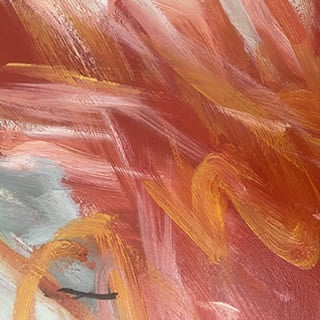
Brush strokes
High-quality canvas and paint.
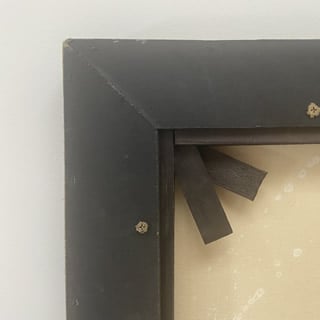
Wood chassis
Canvas stretched on chassis for free.
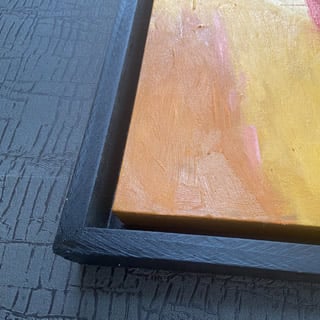
Free Frames
Free framing for your artwork.
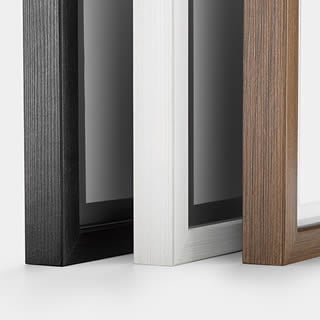
Three colors
Choice of three frame colors.
Luxury oil painting reproduction on canvas
- Museum-quality oil painting reproduction with perfect colour accuracy, to the brushstroke.
- Natural white, matte and ultra smooth 395g/m² Italian cotton and linen canvas.
- Pebeo© brand paint made with high quality pigments for durable colors.
- Every painting is reproduced carefully to the thiniest details; our artists have all
more than 20 years experience copying paintings. - Fine art reproduction with all the tonalities and hues of the original painting.
- Custom trimmed with 2 in (50mm) border suitable for framing (added to the painting size).
- Delivered rolled in a tube, on stretchers or framed.
Your painted canvas will be delivered by the best professional shipping service, for maximum security.
We can send your Andrew Wyeth, Day Dream hand painted reproduction museum quality anywhere in the world at UPS or Fedex shipping cost price. For free if just the canvas rolled in a sturdy tube.
Compare the proportional size of Andrew Wyeth, Day Dream hand painted reproduction hand-painted on canvas

